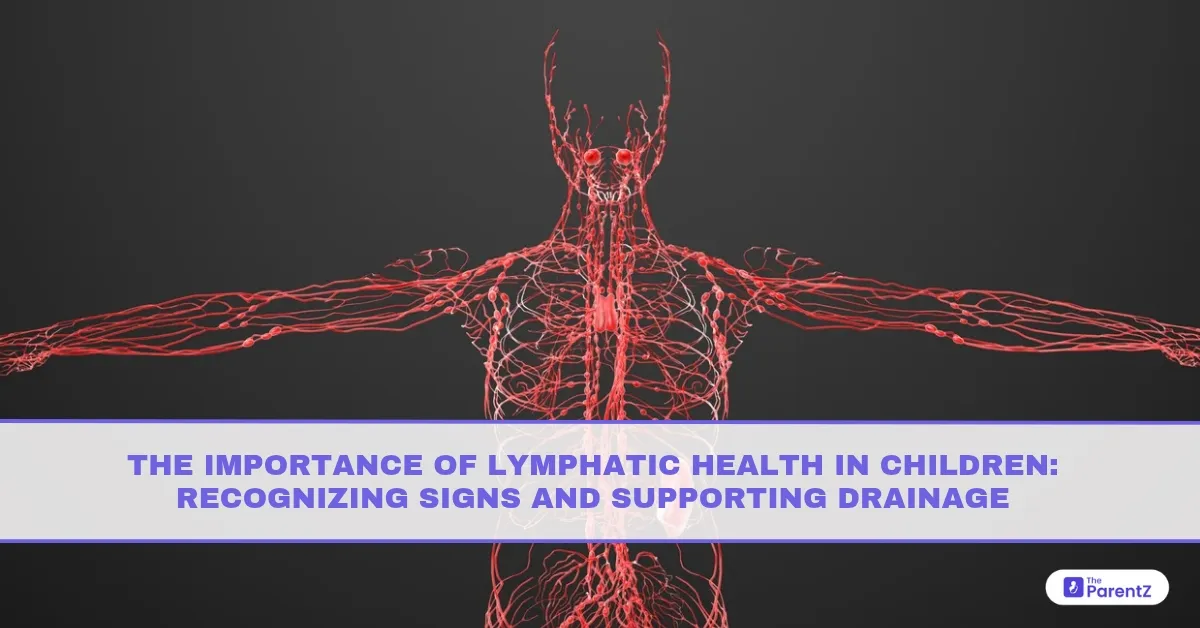The lymphatic system is one of the most essential and under-appreciated parts of the human body, especially in children. While parents often focus on a child’s diet, immunity, and physical activity, the lymphatic system plays a behind-the-scenes role in all of these. It helps eliminate toxins, supports immunity, and maintains fluid balance. When it functions well, children thrive. When it becomes sluggish or congested, it can lead to a host of health issues that often go unrecognised.
What Is the Lymphatic System?
The lymphatic system is a complex network of vessels, lymph nodes, and organs, including the spleen, thymus, tonsils, and adenoids, that carries lymphatic fluid throughout the body. This fluid contains white blood cells (especially lymphocytes), proteins, waste materials, and fats from the digestive system.
Its core functions include:
- Supporting the immune system: It traps and destroys harmful invaders like bacteria and viruses.
- Removing waste and toxins: It filters cellular waste and pathogens out of the tissues and back into the bloodstream.
- Maintaining fluid balance: It collects and returns excess fluid from tissues to the blood circulation.
In children, a healthy lymphatic system supports normal growth, strong immunity, and quicker recovery from illnesses.
Why Lymphatic Health Matters in Children
Children are constantly growing, developing, and being exposed to new pathogens at school or daycare. Their immune systems are still learning how to respond effectively, and the lymphatic system is at the heart of that learning process.
When the lymphatic system is functioning optimally:
- Children recover faster from infections.
- Inflammatory conditions (like eczema or allergies) may be better controlled.
- Toxin buildup is minimized.
- Energy levels remain stable.
Conversely, if the lymphatic system is under strain, waste and toxins can accumulate, leading to immune dysfunction, swelling, or chronic inflammation.
Signs of Lymphatic Congestion in Children
Children are less likely to articulate how they’re feeling, so it’s important to observe physical signs and patterns. Symptoms of lymphatic stagnation or overload can include:
1. Swollen Lymph Nodes
These are most commonly noticed in the neck, armpits, or groin area. While some swelling is normal during infections, persistent or recurrent swelling may signal poor lymphatic flow.
2. Frequent Infections
If your child is repeatedly getting colds, ear infections, or strep throat, the lymphatic system may be struggling to keep up with immune demands.
3. Puffiness or Facial Swelling
A puffy face or under-eye bags can be due to fluid buildup when the lymphatic system isn’t draining properly.
4. Skin Issues
Conditions like eczema, rashes, or acne may be linked to detoxification issues involving the lymph system.
5. Fatigue or Irritability
When toxins build up and inflammation increases, children may appear more tired, foggy, or emotionally sensitive.
6. Digestive Problems
Since the lymphatic system also absorbs fats and transports them from the gut, sluggish lymph flow can contribute to bloating or irregular bowel movements.
How to Support Your Child’s Lymphatic Health
Luckily, supporting lymphatic drainage doesn’t require complicated treatments. Here are practical, natural strategies to encourage lymph flow and maintain a healthy system:
1. Encourage Physical Activity
Movement is the single most important way to stimulate lymphatic flow. Since the lymphatic system has no pump (unlike the circulatory system), it relies on muscle movement and gravity. Encourage your child to:
- Play outdoors
- Jump on a trampoline (rebounding is especially good for lymph flow!)
- Dance, do yoga, or ride a bike
- Walk or stretch regularly
Even a few minutes of movement every hour can make a difference.
2. Prioritize Hydration
Lymph fluid is about 90% water. Dehydration thickens the fluid and slows circulation. Ensure your child drinks enough clean water throughout the day. Herbal teas like chamomile or tulsi can also help support the immune system and reduce inflammation.
Tip: Offer water-rich foods like cucumber, watermelon, and oranges for added hydration.
3. Use Gentle Lymphatic Massage
You can perform light lymphatic massages at home, especially when your child is recovering from illness. Using gentle, circular strokes, massage areas like:
- Neck and collarbones
- Behind the ears
- Arms and legs (always toward the heart)
This encourages drainage and can be especially soothing at bedtime.
4. Incorporate Deep Breathing
Breathing deeply stimulates the thoracic duct, a major lymphatic vessel that helps move lymph through the chest area. Teach your child simple belly-breathing:
- Inhale through the nose for 4 seconds
- Hold for 2 seconds
- Exhale slowly through the mouth for 5 seconds
Do this together a few times each day to promote calm and lymphatic movement.
5. Serve a Nutrient-Rich Diet
A clean, anti-inflammatory diet helps prevent congestion and supports immune function. Aim to include:
- Leafy greens (spinach, kale, moringa)
- Fruits high in vitamin C (berries, oranges)
- Omega-3 sources (flaxseed, walnuts)
- Herbs like turmeric, ginger, and garlic
Avoid excess sugar, dairy, fried foods, and highly processed snacks that can trigger inflammation and toxin buildup.
6. Improve Sleep Hygiene
The body naturally detoxifies during sleep. Ensure your child gets adequate rest in a calm, dark environment. Quality sleep allows the lymphatic and glymphatic systems (brain detox) to reset and function efficiently.
When to Seek Medical Help
While home support can go a long way, there are times when professional medical attention is necessary. Consult your child’s pediatrician if:
- Lymph node swelling persists for more than two weeks
- Your child has unexplained weight loss, night sweats, or fevers
- There’s chronic fatigue or lack of appetite
- You notice prolonged swelling in the limbs (possible lymphedema)
These could be signs of underlying conditions that need further evaluation.
The Takeaway
A well-functioning lymphatic system is essential to your child’s resilience, energy, and long-term wellness. By learning to recognise the subtle signs of lymphatic overload and integrating simple lifestyle habits like hydration, movement, massage, and nutrition, you can help your child build a strong foundation for lifelong health.
As parents and caregivers, we don’t need to wait for problems to arise. Small, consistent efforts can empower the body’s natural detox and defence systems to do what they do best, keep our children thriving.








Be the first one to comment on this story.